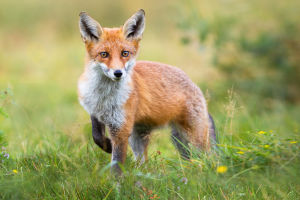Egrets
Egrets and Great Blue Herons are majestic wading birds that belong to the heron family, Ardeidae. They are known for their graceful appearance, long legs, and striking plumage.
These birds are found in various wetland habitats, including marshes, swamps, lakes, and rivers, and are widely distributed across many regions of the world.
Egrets are smaller herons that are known for their stunning white plumage. The most common egret species is the Great Egret (Ardea alba), found in North and South America, Europe, Asia, and Africa. Great Egrets are known for their distinctive appearance, with their long, S-shaped neck, yellow bill, and black legs. During the breeding season.
They develop long, delicate plumes on their back, neck, and head, which are used for courtship displays. Great Egrets feed on a diverse diet that includes fish, amphibians, insects, and small mammals. They are known for their graceful hunting technique, where they stand still in shallow water and patiently wait for their prey to approach before striking with their sharp bills.
On the other hand, the Great Blue Heron (Ardea herodias) is a larger species of heron that is native to North and Central America. Great Blue Herons are known for their distinct blue-gray plumage, with a black stripe extending from their eye to the back of their head.
They also have a long, S-shaped neck, a sharp, yellow bill, and long legs with black bands. Great Blue Herons are solitary birds that are often seen wading in shallow water or perched on tree branches near water bodies.
They have a patient hunting technique, where they stand motionless for long periods, waiting for prey to come within striking distance. Their diet consists of fish, frogs, small mammals, and occasionally, small birds.
Both egrets and Great Blue Herons are highly adapted to their wetland habitats. They have long legs and toes that are specialized for wading in shallow water and soft mud. Their sharp bills are well-suited for capturing their prey, and their necks are flexible, allowing them to strike with precision.
They are also skilled fliers, capable of soaring long distances and covering vast areas in search of food and suitable nesting sites.
During the breeding season, egrets and Great Blue Herons display elaborate courtship behaviors. They perform displays such as preening, calling, and bill-clattering to attract mates. They build large stick nests in trees, often in colonies known as rookeries or heronries, where they lay their eggs and rear their young.
Both parents take turns incubating the eggs and guarding the nest, and they work together to raise their chicks by bringing food to the nest and protecting them from predators.
Despite their similar appearances and behaviors, egrets and Great Blue Herons can be distinguished by a few key features. Egrets are generally smaller than Great Blue Herons, with a more slender body and neck. They also have a straight, yellow bill, while Great Blue Herons have a thicker, more curved, and darker bill.
Additionally, Great Egrets have yellow feet, while Great Blue Herons have black legs with yellow feet.
Both egrets and Great Blue Herons play important roles in wetland ecosystems. As top predators, they help regulate populations of fish, amphibians, and other prey species, and they serve as indicators of the health of their habitats.
However, like many other bird species, egrets and Great Blue Herons face threats such as habitat loss, pollution, and climate change, which can impact their populations. Conservation efforts, including wetland conservation, habitat restoration, and education about these magnificent birds, are crucial to ensure their survival for future generations.


